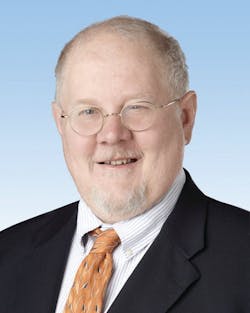Aligning Refrigerants with AIM Act 'Sector Controls' for GWP Limits
As the production, importation, and consumption of HFC refrigerants continue to be phased down according to the U.S. EPA American Innovation and Manufacturing (AIM) Act, the HVACR industry is preparing for a second tier of requirements limiting HFC use. Often referred to as “sector controls,” these will be implemented through the Act’s Technology Transitions rules and will start as early as Jan. 1, 2025. As the name implies, this program was strategically developed to help enable a smooth transition away from HFCs and support adoption of A2L refrigerants. In essence, these rules call for GWP limits for refrigerants based on specific applications, including refrigeration, air conditioning, heat pumps, and more. Because there are dozens of sectors and subsectors outlined in the Technology Transitions rules, focusing on just these few GWP limits—which apply to a majority of the industry applications—can help you in your approach and planning:
GWP <700—such as residential and light commercial A/C, large chillers
Many important sectors—including residential and light commercial air conditioning, and large chillers for applications such as industrial systems and ice rinks—are required to have a refrigerant with a GWP limit of <700 (100-year AR4) in new equipment. These requirements will start as early as 2025 for certain systems.
As a result, systems originally designed to work with refrigerants such as R-410A, R-507, and R-134a will now be designed to operate on lower-GWP gases like R-513A, R-454B, and R-454C.
In some of these sectors, the new limits will require a shift from traditional low-toxicity, nonflammable A1 refrigerants to mildly flammable A2L products. This shift elevates the importance of the massive effort underway industrywide to train and prepare service technicians for working with A2L refrigerants.
GWP <300—included, but not limited to, food retail, and industrial refrigeration
A GWP limit of <300 has been set for some medium-sized systems—those with a maximum 200 lb. charge size—commonly found in the food retail, and industrial refrigeration sectors. Systems such as remote condensing units for walk-in coolers and freezers, cascade systems, and similar units that used R-404A and R-134a, are now being transitioned to lower-GWP A2L products like R-454A. These A2Ls offer better or equivalent performance in terms of capacity and energy efficiency compared to the legacy gases.
GWP <150—from vending machines to large supermarket systems and more
The <150 GWP limit has been “pressure tested” in the mobile sector, which more than a decade ago began transitioning vehicle AC from R-134a to R-1234yf. As a result, many HVACR professionals are already familiar with the <150 GWP limit that will soon impact several additional sectors on the stationary side of the industry.
Most notably, sectors requiring a GWP limit of <150 include some of the smallest applications—such as vending machines, stand-alone units, and household refrigerators—and some of the largest, such as supermarket retail systems with a >200 lb. charge size. As with other segments that have used higher-GWP HFCs like R-134a and R-404A, many systems and store architectures impacted by upcoming sector controls have been evolving to function on new A2L refrigerants, such as R-454C, offering a GWP of 148. In addition, other larger systems are using R-744 (carbon dioxide), and where safety standards allow, some utilize highly flammable A3 refrigerants like R-290 (propane).
The AIM Act Technology Transitions have been established to drive a shift toward solutions supporting decarbonization, when and where it makes sense for the HVACR industry. The applications listed above offer a few important examples and there are many details that come with these rules. However, focusing on these three major groupings is a solid starting point. Understanding which refrigerants are aligned with the sector controls and likely to be utilized can be helpful as the transition ramps up in the years ahead.
Charles “Dr. Chuck” Allgood holds a PhD in chemistry, has more than 30 years of experience in the HVACR industry, and is a respected speaker at many industry events. In addition to Chemours, he’s worked for the National Institute of Standards and Technology. Dr. Allgood has held a variety of research, development, business, technical service, training, and applications development positions with Chemours. Most recently, he has focused on the development of low-GWP refrigerants—including Chemours Opteon™ brand refrigerants—and educating industry professionals about the changing regulatory landscape and A2L refrigerants on the market.
About the Author
Charles Allgood
Technical Fellow with Chemours
Charles “Dr. Chuck” Allgood holds a PhD in chemistry, has more than 30 years of experience in the HVACR industry, and is a respected speaker at many industry events. In addition to Chemours, he’s worked for the National Institute of Standards and Technology. Dr. Allgood has held a variety of research, development, business, technical service, training, and applications development positions with Chemours. Most recently, he has focused on the development of low-GWP refrigerants—including Chemours Opteon™ brand refrigerants—and educating industry professionals about the changing regulatory landscape and A2L refrigerants on the market.

